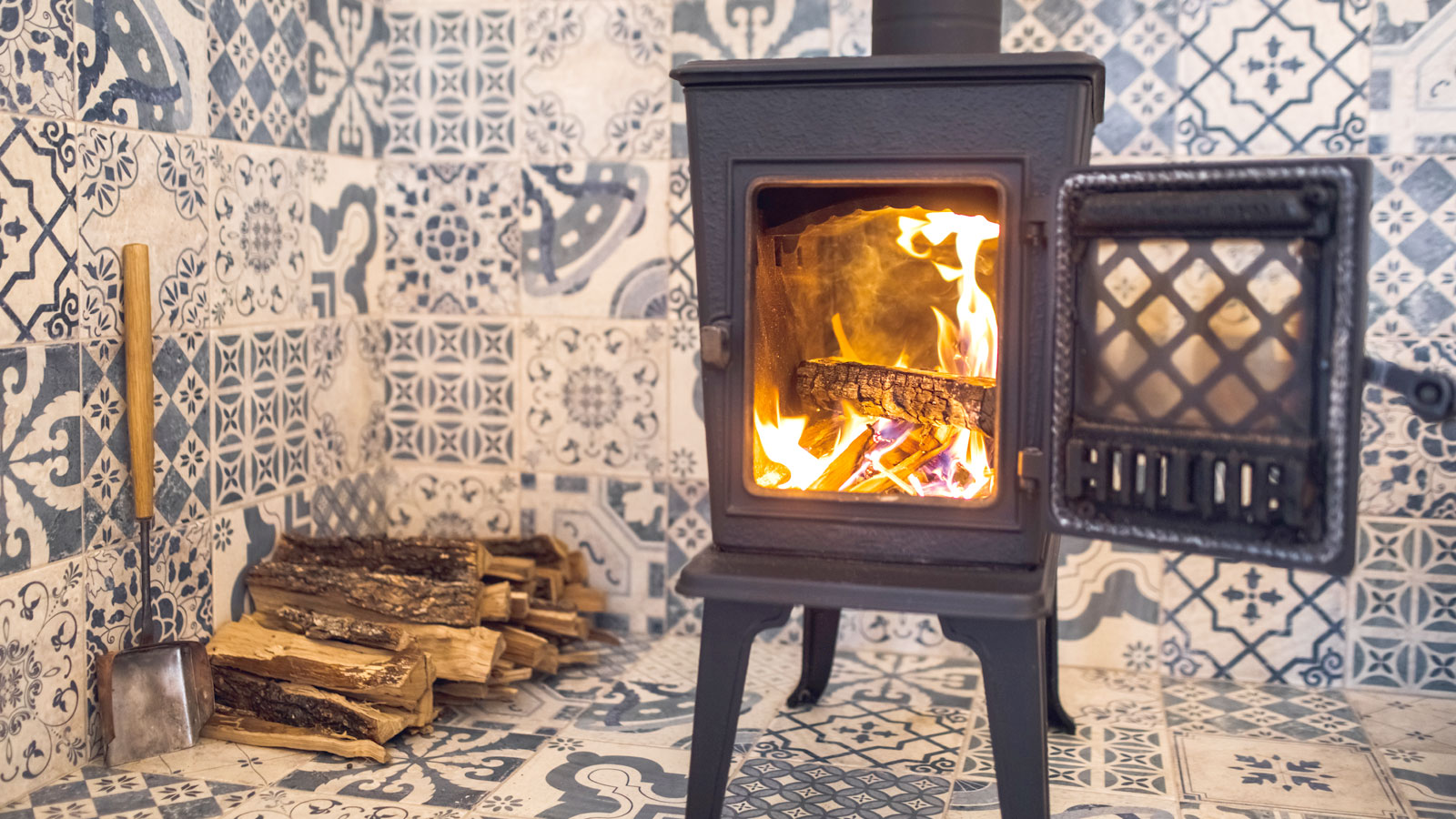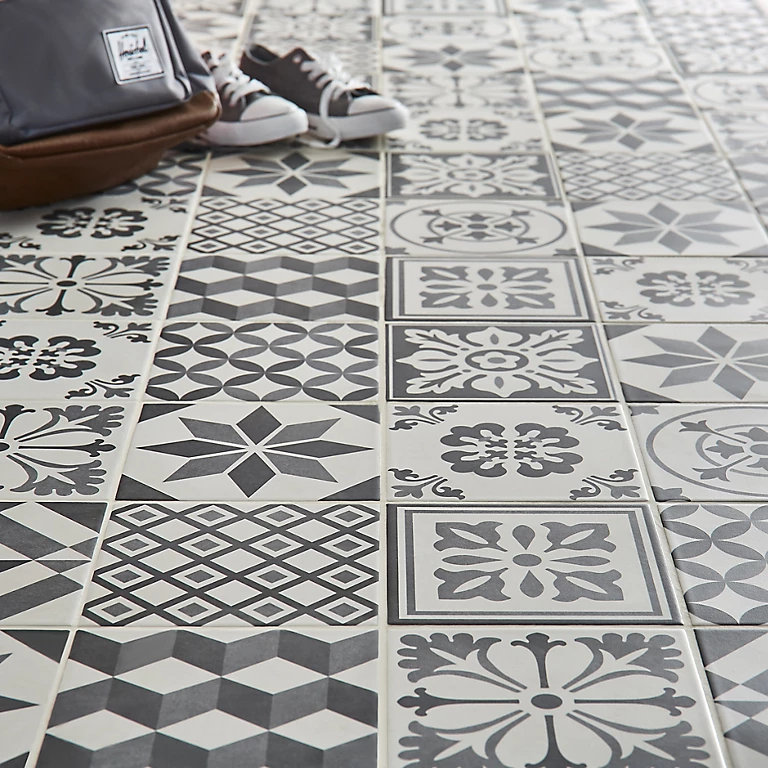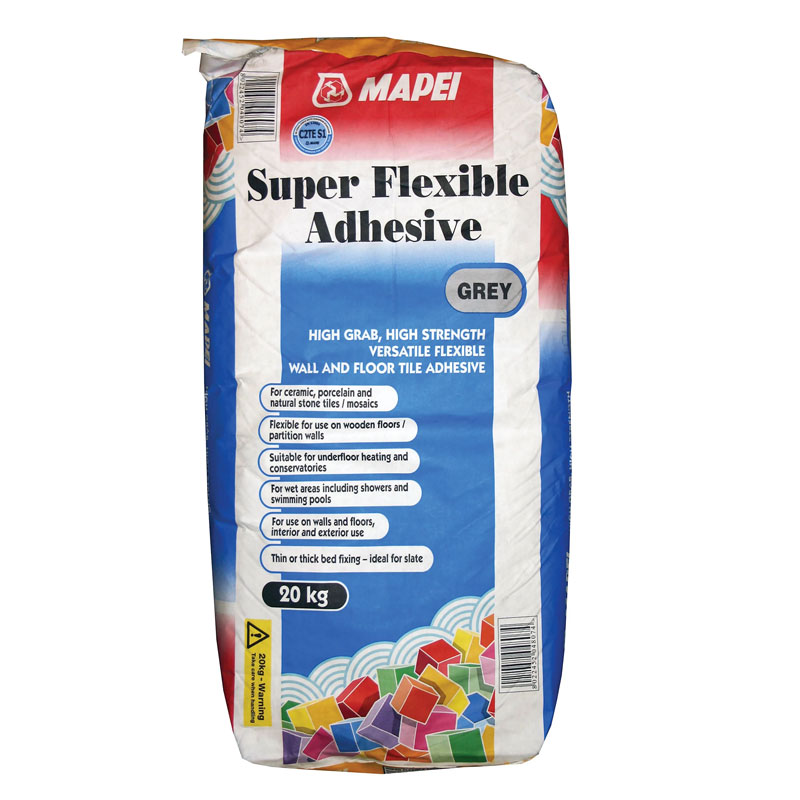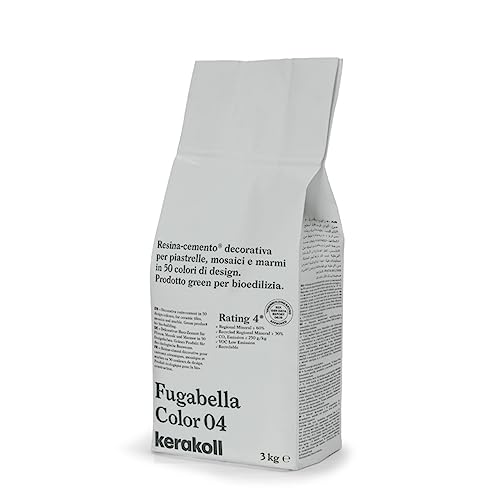Can you tile behind a log burner? We answer common queries to help you make the right choices
We explain what tiles you’ll need to make it happen as well as how to approach this task in an often small space

Can you tile behind a log burner? The answer is yes, but it's not as simple and straightforward as you might think. Choose the wrong tiles, install incorrectly, use the wrong grout and that good-looking design feature behind your log burner could quickly become far less desirable.
Log burning stoves can be a great focal point in a room and the addition of a beautifully tiled background will enhance the look and be practical as well. But you need to choose the right type of tile, adhesive and grout to keep it looking good. Here the pros tell you exactly what you need to know.

Abbas Youssefi, and his brothers Ben and Sam, founded Porcelain Superstore in 2014. The company specialises in the supply of wall and floor tiles curated from around the globe.
Can you tile behind a log burner?
Adding tiles behind a log burner is a popular choice, but you need to choose the right tiles to ensure they stay looking the part for longer. Abbas Youssefi, Founder of independent tile specialists Porcelain Superstore says, “It can get hot around a log burner – so you need to make sure your new tiles are up to the task.”
So what tiles does he recommend? “Porcelain tiles are fired to really high temperatures – 1200 degrees – so they’re absolutely safe to use around your stove. They’re unaffected by heat, unlike ceramic tiles which may crack.”
The beauty of porcelain tiles – apart from their resistance to heat – is that there is plenty of variety as Lesley Taylor of the Baked Tile Co shares, “But don’t feel that limits you to one style of tile as porcelain tiles perfectly mimic everything from terracotta and wood to stone.”
They add, “They are also available in a wide range of patterns, giving the homeowner the opportunity to create a setting perfect for their wider room design scheme.”

These high quality 200mm x 200mm porcelain tiles are suitable for use on walls or floor and will help make a statement in your home.

Lesley Taylor is an designer with more than 25 years’ experience across both residential and commercial property. A registered member of BIID – the British Institute of Interior Design – Lesley has authored 10 books on interior design.
What tile adhesive should I use?
Standard tile adhesive, like you use in a bathroom or kitchen, isn’t the ideal choice for behind a log burner as Youssefi shares, “Don’t be tempted to use ‘ready mix’ tile adhesive.” He adds, “You’ll need to use a high-quality cement-based tile adhesive with an S2 classification. This means that it's highly flexible, so it can deal with any thermal expansion.”
Taylor of the Baked Tile Co reinforces the point, “You should use something that can cope with the expansion and contraction created as heat increases and decreases."
She recommends the Kerakoll H40 range, “It is perfectly formulated for the changes in temperature.”
What grout should I use?
Applying standard grout (check our how to grout tiles guide to see how it's done) could work but this will depend on how close your log burner is to the tiles. If there is no direct heat aimed at the tiles and the log burner surround isn’t close to the tiles then your everyday grout will probably work.
But to be on the safe side Youssefi suggests an alternative, “We’d recommend using a high-performance grout like our Kerakoll Fugabella range to finish off your fireplace.” Why? “This offers the durability of an epoxy grout - so it’s very difficult to stain (and there is likely to be plenty of soot and ash...) and unlike traditional cement-based grouts, it doesn’t need to be sealed.”
But even this grout will need to be maintained, and regularly cleaning grout is the obvious option.
How close can a log burner be to a tile wall?
A log burner shouldn’t be placed against a tiled wall; there needs to be some form of gap to let the air and heat circulate. Jon Butterworth, Managing Director of Arada Stoves suggests, "A gap of at least 100mm is maintained from the stove body to any non-combustible materials to aid the convection of heat out of any fireplace.” If possible leave a bigger gap as this will help prolong the life of the tiles.
Butterworth adds, “Squeezing too large a burner into a small opening is an often repeated mistake and should be avoided.” If a log burner is placed too close to tiles they can discolour and crack. And there is the possibility that the heat loosens the adhesive and the tile falls off the wall.

Jon Butterworth is the MD of Arada Stoves, one of the UK's leading suppliers of log burning stoves and has a wealth of experience in supplying and installing them.
FAQs
Can a log burner sit on a tiled floor?
The simple answer is yes as Youssefi shares, “A log burner can sit on a tiled floor, as long as it’s porcelain.” He adds, “Traditional ceramic tiles might crack from the weight of your log burner. Porcelain tiles are more durable and can withstand the constant heating and cooling of your burner.”
Is there an alternative to tiles?
There are alternative options, but the right tile is still the best option. Youssefi says, “ Porcelain tiles give you the best of both worlds – not only are they highly functional, there’s also a style to suit every interior. There’s stone-effect designs to mimic split face natural stone, rustic brick effect tiles, as well as eye-catching patterns, slatted woods and fluted subways.”
But it's not just their looks that makes them desirable as Youssefi continues, “They are fire-proof and stain-resistant, they’ll look much better than any other material and will pass the test of time.”
Youssefi finishes with a useful and practical tip to help make sure your tiles will get the best surface to tile on to, “We recommend overboarding your fireplace opening with 12mm thick HardieBacker board (available from B&Q). This will give you a non-combustible, flat base to tile onto - and it’s a safer alternative to plasterboard.
Don’t have a log burner yet but want one? Then you need to check out our can you have a log burner without a chimney? and Thinking of installing a log burner? guides to help see if they're right for you and if they are, get the right one.
Get the Homebuilding & Renovating Newsletter
Bring your dream home to life with expert advice, how to guides and design inspiration. Sign up for our newsletter and get two free tickets to a Homebuilding & Renovating Show near you.
Steve Jenkins is a freelance content creator with over two decades of experience working in digital and print and was previously the DIY content editor for Homebuilding & Renovating.
He is a keen DIYer with over 20 years of experience in transforming and renovating the many homes he has lived in. He specialises in painting and decorating, but has a wide range of skills gleaned from working in the building trade for around 10 years and spending time at night school learning how to plaster and plumb.
He has fitted kitchens, tiled bathrooms and kitchens, laid many floors, built partition walls, plastered walls, plumbed in bathrooms, worked on loft conversions and much more. And when he's not sure how to tackle a DIY project he has a wide network of friends – including plumbers, gas engineers, tilers, carpenters, painters and decorators, electricians and builders – in the trade to call upon.



